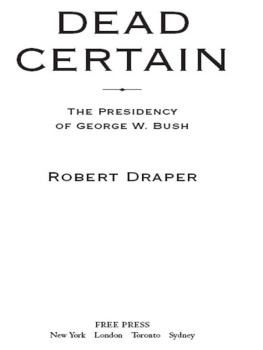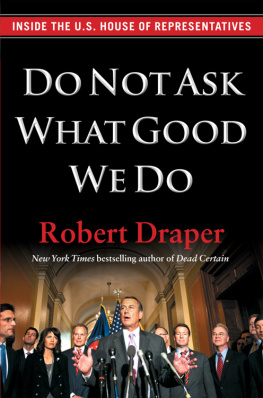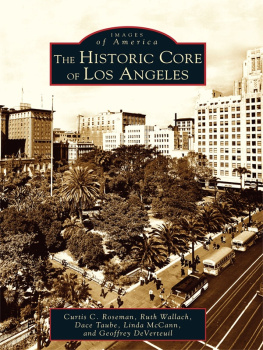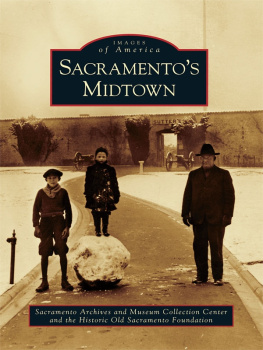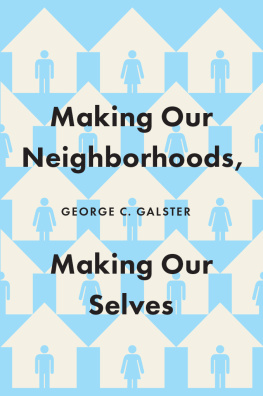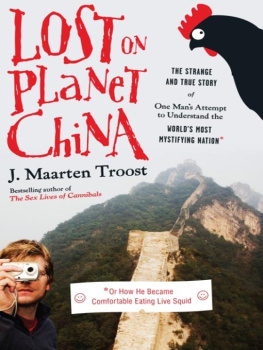Draper - Kansas Citys Historic Midtown Neighborhoods
Here you can read online Draper - Kansas Citys Historic Midtown Neighborhoods full text of the book (entire story) in english for free. Download pdf and epub, get meaning, cover and reviews about this ebook. City: Kansas City (Mo.);Missouri;Kansas City, year: 2015, publisher: Arcadia Publishing, genre: Non-fiction. Description of the work, (preface) as well as reviews are available. Best literature library LitArk.com created for fans of good reading and offers a wide selection of genres:
Romance novel
Science fiction
Adventure
Detective
Science
History
Home and family
Prose
Art
Politics
Computer
Non-fiction
Religion
Business
Children
Humor
Choose a favorite category and find really read worthwhile books. Enjoy immersion in the world of imagination, feel the emotions of the characters or learn something new for yourself, make an fascinating discovery.

- Book:Kansas Citys Historic Midtown Neighborhoods
- Author:
- Publisher:Arcadia Publishing
- Genre:
- Year:2015
- City:Kansas City (Mo.);Missouri;Kansas City
- Rating:5 / 5
- Favourites:Add to favourites
- Your mark:
- 100
- 1
- 2
- 3
- 4
- 5
Kansas Citys Historic Midtown Neighborhoods: summary, description and annotation
We offer to read an annotation, description, summary or preface (depends on what the author of the book "Kansas Citys Historic Midtown Neighborhoods" wrote himself). If you haven't found the necessary information about the book — write in the comments, we will try to find it.
Draper: author's other books
Who wrote Kansas Citys Historic Midtown Neighborhoods? Find out the surname, the name of the author of the book and a list of all author's works by series.
Kansas Citys Historic Midtown Neighborhoods — read online for free the complete book (whole text) full work
Below is the text of the book, divided by pages. System saving the place of the last page read, allows you to conveniently read the book "Kansas Citys Historic Midtown Neighborhoods" online for free, without having to search again every time where you left off. Put a bookmark, and you can go to the page where you finished reading at any time.
Font size:
Interval:
Bookmark:
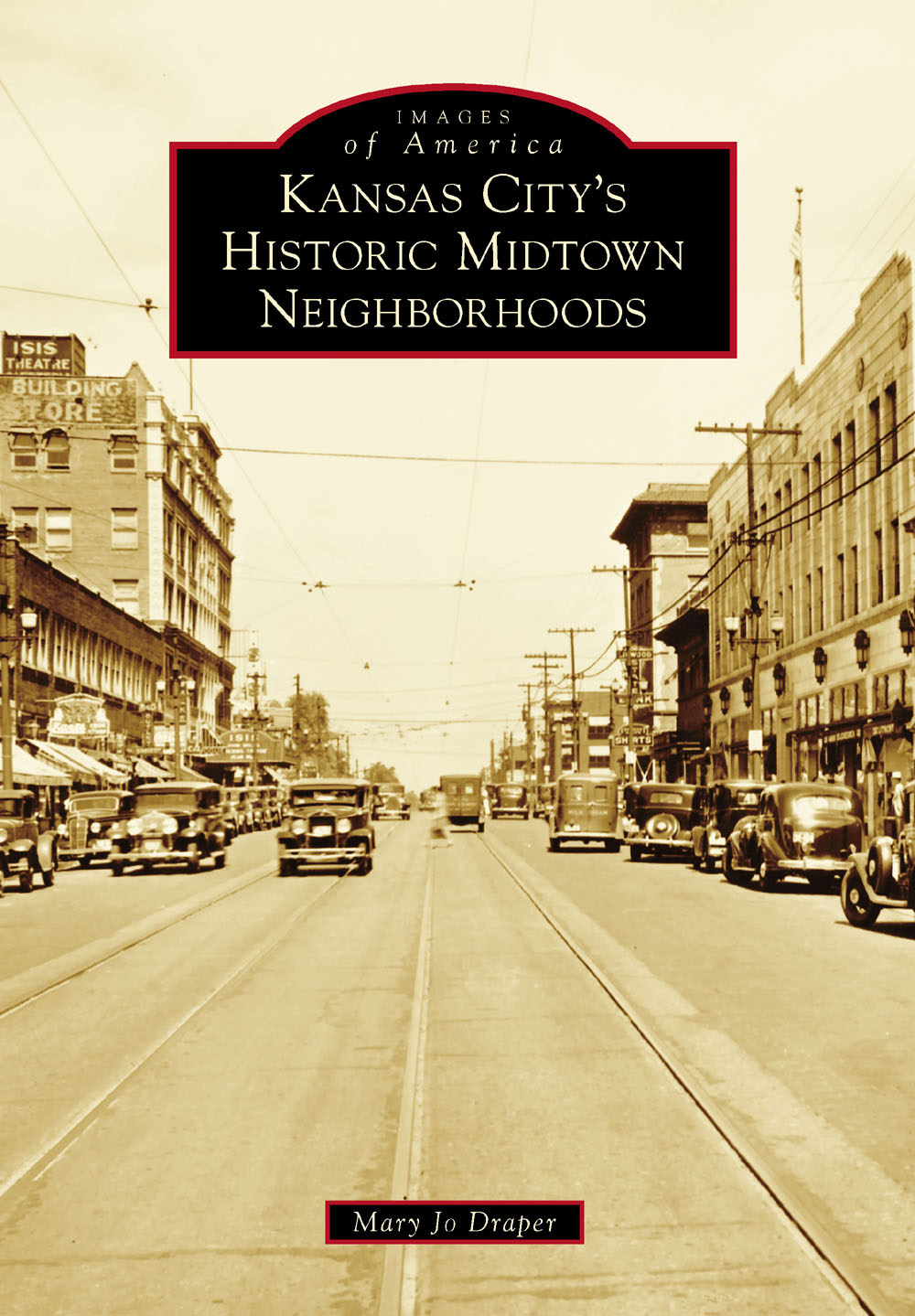
IMAGES
of America
KANSAS CITYS
HISTORIC MIDTOWN
NEIGHBORHOODS

Midtown Kansas City lies between Thirty-first and Fifty-fifth Streets, from State Line Road to the Paseo. This map shows the boundaries of the 22 neighborhoods at least partly within those boundaries. (Map by the author, based on official City of Kansas City, Missouri, neighborhood boundaries.)
ON THE COVER: Streetcar tracks and automobiles helped Midtown Kansas City neighborhoods grow and thrive from 1900 to the 1950s, and the neighborhoods continue to attract residents and businesses today. The Troost streetcar line carried people from the newly created residential districts to the south to jobs downtown. As neighborhoods grew, businesses flourished on Troost Avenue, as did entertainment venues like the popular Isis Theater. (Courtesy of Wilborn and Associates.)
IMAGES
of America
KANSAS CITYS
HISTORIC MIDTOWN
NEIGHBORHOODS
Mary Jo Draper

Copyright 2015 by Mary Jo Draper
ISBN 978-1-4671-1342-7
Ebook ISBN 9781439650349
Published by Arcadia Publishing
Charleston, South Carolina
Library of Congress Control Number: 2014947176
For all general information, please contact Arcadia Publishing:
Telephone 843-853-2070
Fax 843-853-0044
E-mail
For customer service and orders:
Toll-Free 1-888-313-2665
Visit us on the Internet at www.arcadiapublishing.com
To all the people who now call Midtown home, and all of those we hope someday will.
CONTENTS
ACKNOWLEDGMENTS
Many people shared their interest in Midtown Kansas City and its neighborhoods. Without their help, this book would not have been possible.
The researchers who have spent countless hours digging out the history of Kansas City have done a great service to all of us, and they do not often get the thanks they deserve. The applications to the National Historic Register, with their careful documentation of specific neighborhoods and their houses and businesses, are an important repository of information. The Historic Kansas City Foundation has also helped to document, and advocate for saving, historic Midtown buildings. The Westport Historic Society has helped to continue to add to our knowledge of early Westport.
For assistance in finding information and photographs, thanks must go first to Jeremy Drouin at the Missouri Valley Room of the Kansas City Public Library. I am also grateful to Diane Burnette at the Main Street Development Corporation, who shared that organizations archives, as well as the Westport Historical Society.
Kansas Citys strong neighborhood associations work every day to preserve Midtown and keep the history alive. I would especially like to thank Joe Montanari of the West Plaza neighborhood, who has researched the history of that area and shared it generously in the neighborhood newsletter over the years.
Julie Tenenbaum offered invaluable help in proofreading and generous moral support.
I would also like to thank the readers of the Midtown KC Post, who share a passion for Kansas City neighborhoods and history and who treasure the homes, buildings, and streets that make Midtown such a unique place to live.
Photographic sources are abbreviated as follows: Missouri Valley Special Collections, Kansas City, Missouri Public Library (MVSC-KCPL); University of MissouriKansas City Libraries, Dr. Kenneth J. LaBudde, Department of Special Collections (UMKCLaBudde); Library of Congress Prints and Photographs Division, Washington, DC (Library of Congress); photographs taken by Mary Jo Draper (authors collection); Midtown KC Post Uncovering History Collection (Midtown KC Post); Westport Historical Society (Westport Historical); Main Street Corridor Development Corporation (MainCor); and Wilborn and Associates Photographers (Wilborn and Associates).
INTRODUCTION
Visitors to Kansas City and longtime residents alike often tend to lump the area of the city from Thirty-first to Fifty-fifth Streets, from State Line Road to the Paseo, into a general category: Midtown Kansas City. Yet Midtown actually contains 22 distinct neighborhoods, each with a unique history, character, and flavor.
Much has been written about some of the Midtown neighborhoods. Others are less well known. The idea behind this book was to bring together the histories of the neighborhoods that have been discovered by professional and neighborhood historians and to inspire additional digging into the past.
These neighborhoods are defined by their history, the buildings within their borders, the major and minor streets, the parks and green spaces, and the schools and commercial areas that have served their residents. In most cases, these neighborhood bones were built between 1880 and 1930, creating the structure of the Midtown neighborhoods known today.
Midtown grew out of two towns: Kansas City, incorporated in 1853, and Westport, the outfitting center for the Oregon, California, and Santa Fe Trails, incorporated in 1857. Mrs. G.H. Wheeler, who grew up at Ninth and Main Streets, recalled taking a trip to Westport as a child in the mid-1800s. The horse passed only two houses along the way. It took the riders over steep and hilly terrain, through orchards and fields. The homes she passed were simple and utilitarian.
When Wheeler recounted her trip near the turn of the 20th century, things had changed in many ways. Kansas City was a center of commerce for the railroad, grain-handling, and meatpacking industries. After the Civil War, a growing number of middle-class men and women had arrived in the city. Wealthy people had moved away from downtown, and the homes they erected were large and fancy.
In the mid-1880s, real estate speculation in Kansas City reached near-hysterical proportions. Land south of the city, extending to the town of Westport, three miles distant, was sold and resold at fantastic profits, Ray Ellis wrote in A Civic History of Kansas City. Those changes helped to shape Midtown.
Midtowns growth began when the wealthiest captains of industry moved to the south sidethe area called Hyde Park, along Troost Avenueand to the new Roanoke district. After their mansions went up, middle-class folks followed, building smaller homes or purchasing them from a developer. Their Prairie-style and Kansas City shirtwaist homes, along with rows of bungalows, give Midtown much of its distinct image today. Immigrants and workers filled in the remaining spaces.
Nothing had a greater impact on Midtown development than Kansas Citys vibrant streetcar system. Early horse-drawn cars connected the Central Business District to Westport. In the 1880s, cable lines installed on Troost Avenue, Grand Boulevard, and Prospect Avenue greatly sped up travel and made it possible to live farther from downtown. Streetcars and the building boom they triggered also transformed major streets such as Broadway Boulevard, Troost Avenue, and Main Street into bustling commercial districts serving the needs of new residents.
Streetcars continued to run in Kansas City until 1957, but photographs of Midtown neighborhoods over the years show increasing signs of dependence on automobiles. By the 1940s, photographs show cars lining the curbs, and neighborhoods are dotted with gas stations, auto-repair shops, and car dealers. The fabric of each neighborhood was also woven from the movie theaters, drugstores, and grocery stores where residents met and shared their leisure time.
Next pageFont size:
Interval:
Bookmark:
Similar books «Kansas Citys Historic Midtown Neighborhoods»
Look at similar books to Kansas Citys Historic Midtown Neighborhoods. We have selected literature similar in name and meaning in the hope of providing readers with more options to find new, interesting, not yet read works.
Discussion, reviews of the book Kansas Citys Historic Midtown Neighborhoods and just readers' own opinions. Leave your comments, write what you think about the work, its meaning or the main characters. Specify what exactly you liked and what you didn't like, and why you think so.

